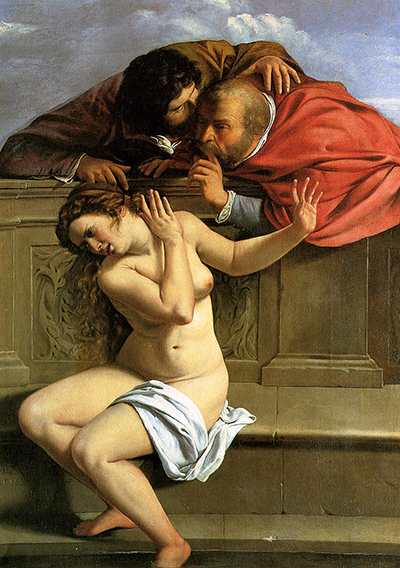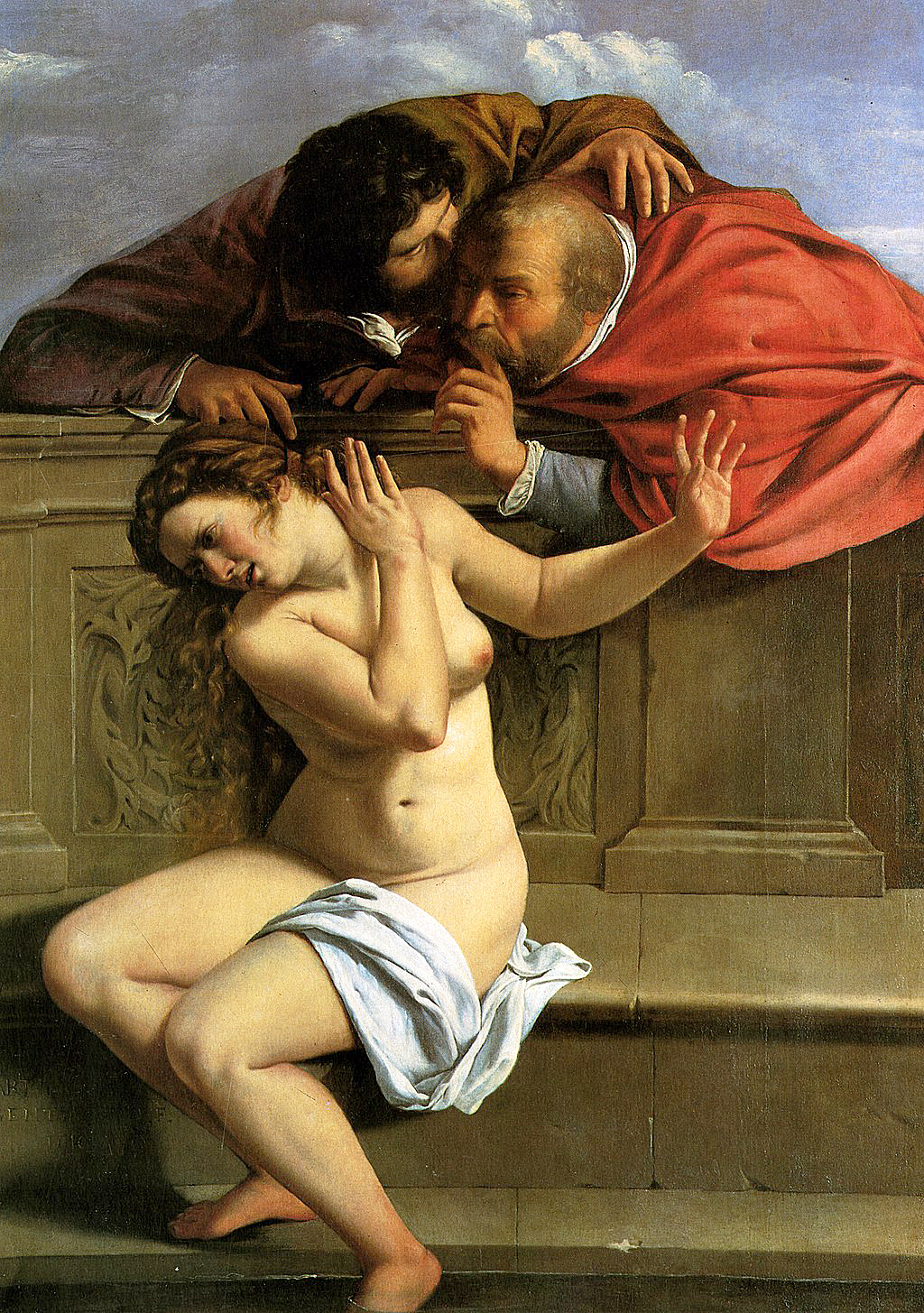Artist Artemisia climbs into the mind of the disgusted Susanna in this emotional piece which displays a young women attempting to block the advances of two elderly men. They threaten to sully her reputation if she rejects their interest.
This entire composition is indicative of the artist's own life, which includes a number of traumatic events which taught her of the dangers posed by the opposite sex. Perhaps she even saw herself in Susanna, which would have helped her to draw on her emotions for this painting. One of the main strengths of this artist was her ability to get in tune with the emotions of the figures in her paintings, perhaps better than most male members of the Baroque era. She was also not afraid to offer a level of realism to her facial expressions which would shock some, but excite others, depending on their personal artistic taste. She would receive interest from a number of donors and art collectors because of her alternative artistic style, whilst others would simply not consider her because she was a woman.
Susanna and the Elders is a highly significant painting in the overall development of the artist, coming as it did early on in her career. She would only have been around seventeen at the time that she constructed this painting, making it all the more remarkable considerable the quality of work found within it. Many believed it to be by her father, such was the impressive nature of this work but soon it would be understood that his daughter possessed truly impressive technical skills herself. The story in religious scripture tells of how her reputation was damaged because she rejected the advances of these two men before finally her reputation was cleared with the aid of Daniel, a young man who decided to help this vulnerable young woman who was being taken advantage of. It is interesting to compare this artist's version of Susanna and the Elders with that of other famous artistic names, to see how a woman might address the theme differently - see Annibale Carracci's for example.
The unambigious composition in front of us here features Susanna in the foreground, virtually unclothed, with the two elderly men leaning over a small piece of garden architecture, peering at her whilst deep in conversation. Their posture is entirely menacing, as they are close enough to touch her, whilst she clearly shows her discomfort and displeasure by holding up her hands in a defensive manner. Her lack of clothing adds to the image of her vulnerability and she is also placed lower in the painting, adding to the feeling of danger in which she finds herself. Gentileschi added some beautiful touches of decorative detail to the wall that separates the three figures, and also some architectural flourishes which help to build a feeling of perspective, with steps nearest us leading up to the main wall. A bright blue sky sweeps across the top of the painting and there is also technical interest in the clothing worn by the two elders, particularly in the brighter cloak worn by the figure on the right hand side.
The artist would draw on inspiration from religious scripture for many of her paintings and in this case she took content from the Book of Susanna in the Additions to Daniel. Within the extended story Daniel would help to convince the ruling powers of Susanna's innocence which was uncovered once the two elderly gentlemen were interviewed separately. The atmosphere of this book underlines the precarious nature of life for women during the past centuries and reminds us of how far things have come in more recent times. It would, ultimately, require the intervention of a male figure to save an innocent woman, whose own protestations were not deemed sufficient on their own. The artist herself has become regarded as a feminist icon because of her own struggles and so this type of content fitted her own experiences of being oppressed by male figures within her life. Considering the relatively privileged life that she was given by her father, one can only imagine the problems experienced by less fortunate women.
Susanna and the Elders was one of three passages added via the Additions series, with the other two being Song of the Three Holy Children and Bel and the Dragon. There were also twelve original chapters within the Book of Daniel, such as Induction into Babylon, Nebuchadnezzar's Dream and The Fiery Furnace. The themes found within this book, including the additions, have inspired countless other artists over the years. Even just regarding Susanna, there have been other versions produced by the likes of Lorenzo Lotto, Guido Reni, Rubens, Van Dyck, Tintoretto, Rembrandt and Tiepolo. Additionally, La Casta Susana by Juan Manuel Blanes is also of particular interest to us here because the format on the painting is the most similar to the version delivered by Gentileschi here. There is the same sculptured wall behind the undressed figure, though that artist chose not to actually feature images of the elderly men, and just suggests at them through the concerned look of Susanna herself.
The original artwork from around 1610 can now be found at the Schloss Weißenstein in Pommersfelden, Bavaria, Southern Germany. The building itself is a beautiful example of Baroque architecture and now houses original paintings and sculptures from a number of highly respected European artists, besides just this piece from Artemisia. You will, for example, also find the likes of Peter Paul Rubens, Albrecht Dürer, Titian, Rembrandt and Anthony van Dyck represented here too, though always check ahead if there is a specific part of their collection that you would like to see. This is a rare opportunity to see such extraordinary art within Bavaria, as most of these artist's original paintings are now thinly spread right across Europe and North America. There have been a number of exhibitions of Gentileschi's work in recent years as galleries have attempted to offer a more diverse selection of artists and this has placed this artist's work in great demand.





